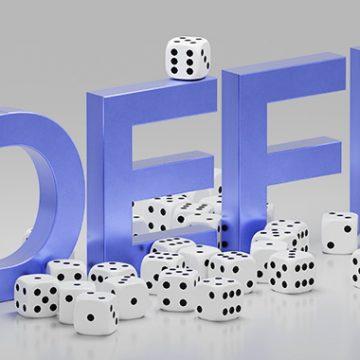
Decentralized Finance (DeFi) are an alternative to the traditional banking sector. It includes blockchain apps and services that facilitate digital transactions between the participants directly, without intermediaries. As the crypto community thinks, the current financial system is obsolete, it lacks transparency, and is highly controlled.
DeFi replaces traditional technology by open source protocols, granting access to financial services to anyone. The systems are maintained by the users. Meanwhile, the projects remain open and free of regulators that can block a transaction or deprive a user of access to a certain service.
Services feature crediting, investments, and buying crypto. Thanks to DeFi, those institutions that used to process operations slowly and be prone to human mistakes, became automatic and safe. DeFi provides passive income from storing crypto and save money on transactions and credits.
How DeFi is different from traditional finance
To understand the idea of DeFi and their popularity, it is important to see the difference between it and centralized, or traditional, finance. Here are the main issues of the banking sector that DeFi solves today:
- Banking services are not available to everyone
- Financial services include hidden payments
- Transaction take time.
- Financial entities have work hours.
In the classic banking sector, money is stores in banks and other financial institutions, the only goal of which is making money. Transactions are processed by third party services that charge fees for their intermediary functions.
Example: when you pay for your purchases in a store by card, the seller sends the data to the bank, then it goes to the credit card network, then a payment request goes to the bank. Then the bank approves the payment and confirms it with the seller’s bank.
Each participant of these operations gets paid for their services. The consumer pays for owning the card, while the seller pays for getting money from the consumer. DeFi eliminates intermediaries, letting the parties of financial operations work directly and fast.
Operations go through peer-to-peer networks that include safety protocols, connectivity, software and hardware. So, a DeFi user can buy and sell assets, lend them and take loans from all over the world, provided they have Internet access. Finance is controlled by users via their personal wallets and payment services.
Programmes log and check users’ actions in distributed database that collects data from network users and use verification mechanisms.
How DeFi system works
DeFi uses the block chaichain technology that lies under any cryptocurrency. A blockchain is a distributed and protected database. Decentralized applications (DApps) are used for launching the blockchain and processing transactions.
In the blockchain, all transactions are written down into blocks and later checked by other network users. If they agree with the transaction, the block gets closed and encoded. Then a new block is created, containing info about the previous block.
Each block is connected to the new one by the info it contains — this is what we call a blockchain. Information in previous blocks cannot be altered without corrections in the next ones, so a blockchain cannot be edited.
Which services DeFi provides
DeFi uses cryptocurrencies and smart contracts for providing financial services without banks as intermediaries. Popular DeFi opportunities:
- Fast remittance worldwide
- Crypto storage in wallets
- Lending and loaning money
- Trading crypto at any time of the day
- Token assets
How to make money on DeFi
A popular method of earning on DeFi is receiving passive income from crediting apps based on the Ethereum network. Users lend money to other users and charge commissions for it.
Also, money can be made on farming or profitable farming, though this is riskier already. Here, crypto assets are blocked in a pool for receiving commission. That is why users study various DeFi tokens until they choose those with the best farming bonuses.
There are also ways of receiving passive income from just storing money in a personal wallet.
Risks of DeFi
DeFi is connected with crypto, which means it is extremely risky. The system has no regulator and attracts frauds. Evidence shows that the number of illegal operations in 2021 has increased by 100% compared to 2020.
Frauds issue tokens with very high farming income, hoping to attract lots of attention to their project. When trade in the pool is active and the token grows, they withdraw all the money and disappear with it.
High volatility of the token price is yet another risk of DeFi alongside the minimal value of new projects.
Future of DeFi
DeFi remains at the early stage of its development. Regardless of active growth in 2020, society expected such projects to close soon. However, the sphere keeps developing, enjoying stable interest of investors.
However, DeFi has no regulations; it still faces errors, safety issues, and frauds. According to Elliptic, users have already lost $10.5 billion. Analysts think that vulnerability of DeFi projects is higher than of the traditional banking sector, so DeFi is a threat to financial stability.
